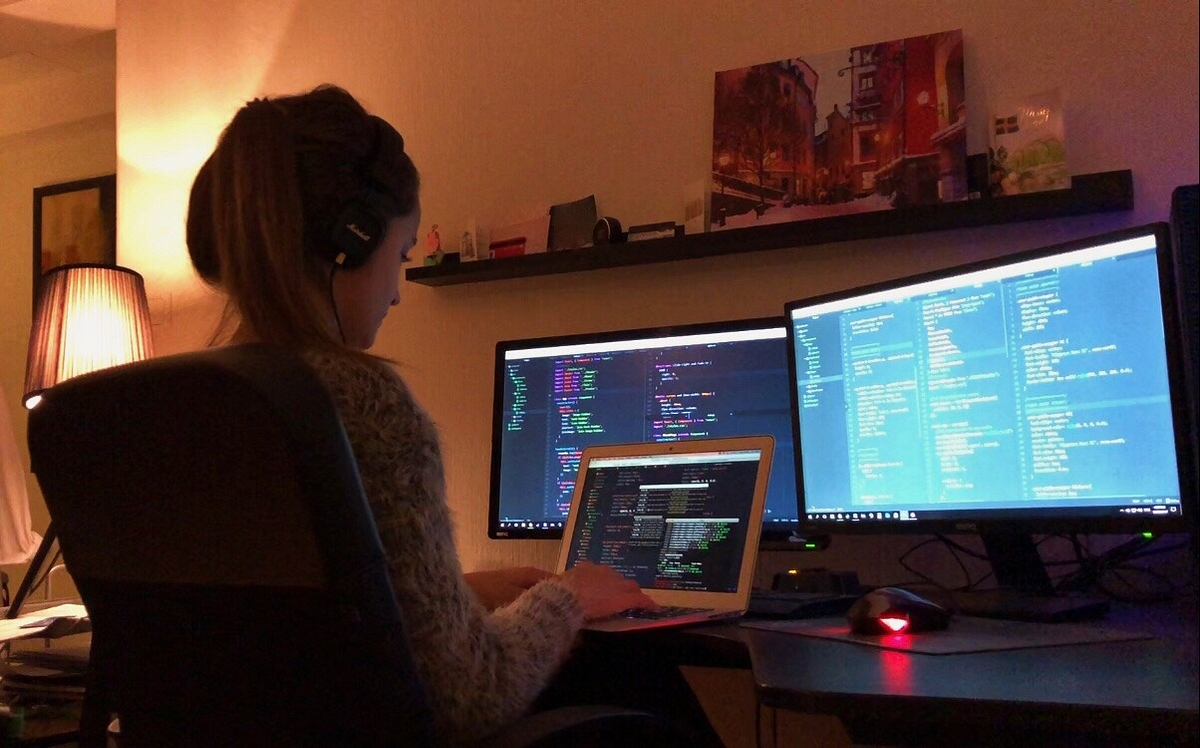Hire Dedicated Developers for Your Following Big Project with Confidence
Wiki Article
Dedicated Developers vs. In-House Teams: Which Is Right for You?
The decision between making use of committed programmers and maintaining an internal group is a substantial one that can influence the trajectory of your tasks and general organization method. Committed designers supply a level of versatility and specialized proficiency that can be beneficial for specific, temporary campaigns. Alternatively, in-house teams add to a cohesive firm culture and a nuanced understanding of lasting objectives. By taking a look at important factors such as spending plan, task range, and wanted control, you can better figure out which strategy straightens with your business demands. Nevertheless, the ramifications of this option extend past instant end results-- take into consideration the broader influence on your service landscape.Recognizing Committed Programmers
The growing demand for specialized abilities in the technology industry has actually resulted in the emergence of specialized developers as a feasible option for numerous organizations. These specialists are typically contracted on a task basis, enabling firms to utilize particular competence without the long-lasting commitment associated with full-time hires. Committed programmers are frequently embedded within a client's team, offering versatility and scalability to meet project requirements.This version permits companies to access a global skill pool, which is specifically advantageous in a quickly progressing technical landscape. Committed programmers can be sourced from different geographical places, making sure that companies can locate the right ability at affordable prices. They typically bring a wealth of experience and expertise, having functioned on varied tasks throughout various industries.
Furthermore, committed developers can focus exclusively on the jobs at hand, enhancing productivity and efficiency. They are outfitted to incorporate effortlessly into existing process, teaming up very closely with in-house teams to attain project goals. This strategy not just lowers the burden of recruitment and training yet also permits companies to remain agile, adapting quickly to changing market demands and technical innovations.
Advantages of In-House Teams

In addition, in-house groups have a tendency to have a much deeper understanding of the business's mission, worths, and objectives. This positioning can boost worker engagement and motivation, as employee feel much more linked to their job and the organization's success. Additionally, having a dedicated in-house team enables far better alignment of objectives and approaches, as these members are constantly concentrated on the firm's concerns.
Internal groups likewise assist in quicker decision-making procedures, as they can react much more swiftly to modifications and challenges. The well established partnerships and experience with firm procedures enable structured workflows and minimized miscommunication. Ultimately, the mix of a cohesive culture, placement with organizational objectives, and effective communication makes in-house teams a beneficial asset for several companies, specifically those looking to cultivate lasting development and technology.
Expense Factors To Consider
When reviewing cost factors to consider, both internal groups and dedicated designers hire dedicated developers existing distinctive monetary ramifications for companies. Involving committed programmers commonly involves a pay-per-project or per hour price design, which can be affordable for services with changing job needs. This strategy enables versatility in scaling sources up or down, making sure that companies only pay for the solutions they require.In comparison, internal teams involve repaired prices, including salaries, advantages, and overhead costs such as office and devices. While this version provides higher control and immediate availability of resources, it might bring about higher long-lasting expenditures, especially if the work does not validate a full time staff.
In addition, companies need to consider the covert costs connected with employment and training of internal employees, which can further stress budgets. In some situations, the time and resources spent on taking care of an in-house team can diminish the company's core organization objectives.

Task Monitoring and Adaptability
Job administration and versatility are essential aspects that influence the choice between dedicated programmers and in-house teams. Devoted developers generally use a high level of adaptability, permitting companies to scale sources up or down based upon job demands. This agility can be specifically beneficial for companies experiencing changing work or those seeking to introduce swiftly. Devoted groups usually have actually established processes for taking care of jobs efficiently, leveraging certain techniques like Agile or Scrum, which promote repetitive progression and versatility.
Ultimately, the option in between dedicated designers and in-house groups depends upon the preferred level of adaptability and the specific job management requirements. Business should review their functional characteristics, task complexity, and source accessibility to identify which option lines up best with their tactical purposes.
Making the Right Option
Picking the appropriate advancement strategy-- dedicated programmers or internal teams-- requires a mindful analysis of numerous factors that straighten with a business's strategic goals. Conversely, internal teams can provide far better continuity and combination with existing personnel.Next, evaluate your spending plan. Dedicated designers often offer a cost-effective option for short-term projects, while in-house groups might incur greater long-term costs due to wages, benefits, and overhead prices. Examine the level of control and cooperation wanted; internal groups usually cultivate more powerful communication and positioning with company society.
If immediate results are needed, committed programmers can be onboarded quickly, whereas building an in-house group takes time for recruitment and training. If continual growth is crucial, investing in an in-house team might yield much better returns over time.
Conclusion
In final thought, the decision in between specialized designers and internal groups rests on project demands and business purposes. Devoted developers supply adaptability and specialized knowledge, making them appropriate for short-term efforts. On the other hand, internal teams cultivate a cohesive society and deeper placement with lasting goals. Careful examination of budget plan restraints, project timelines, and preferred control degrees is essential for figuring out one of the most proper approach, making sure placement with tactical top priorities and functional performance.The decision in between utilizing committed developers and preserving an in-house team is a significant one that can impact the trajectory of your tasks and total organization approach.Job management and versatility are essential elements that affect the choice between specialized developers and in-house groups. hire dedicated developers.In contrast, internal groups may succeed in keeping a constant job monitoring structure due to their knowledge with the organization's society and lasting goals. Devoted programmers typically present a cost-efficient service for short-term jobs, while internal groups may sustain higher long-term expenditures due to incomes, advantages, and expenses expenses.In final thought, the decision between specialized designers and in-house groups hinges on task needs and business goals
Report this wiki page